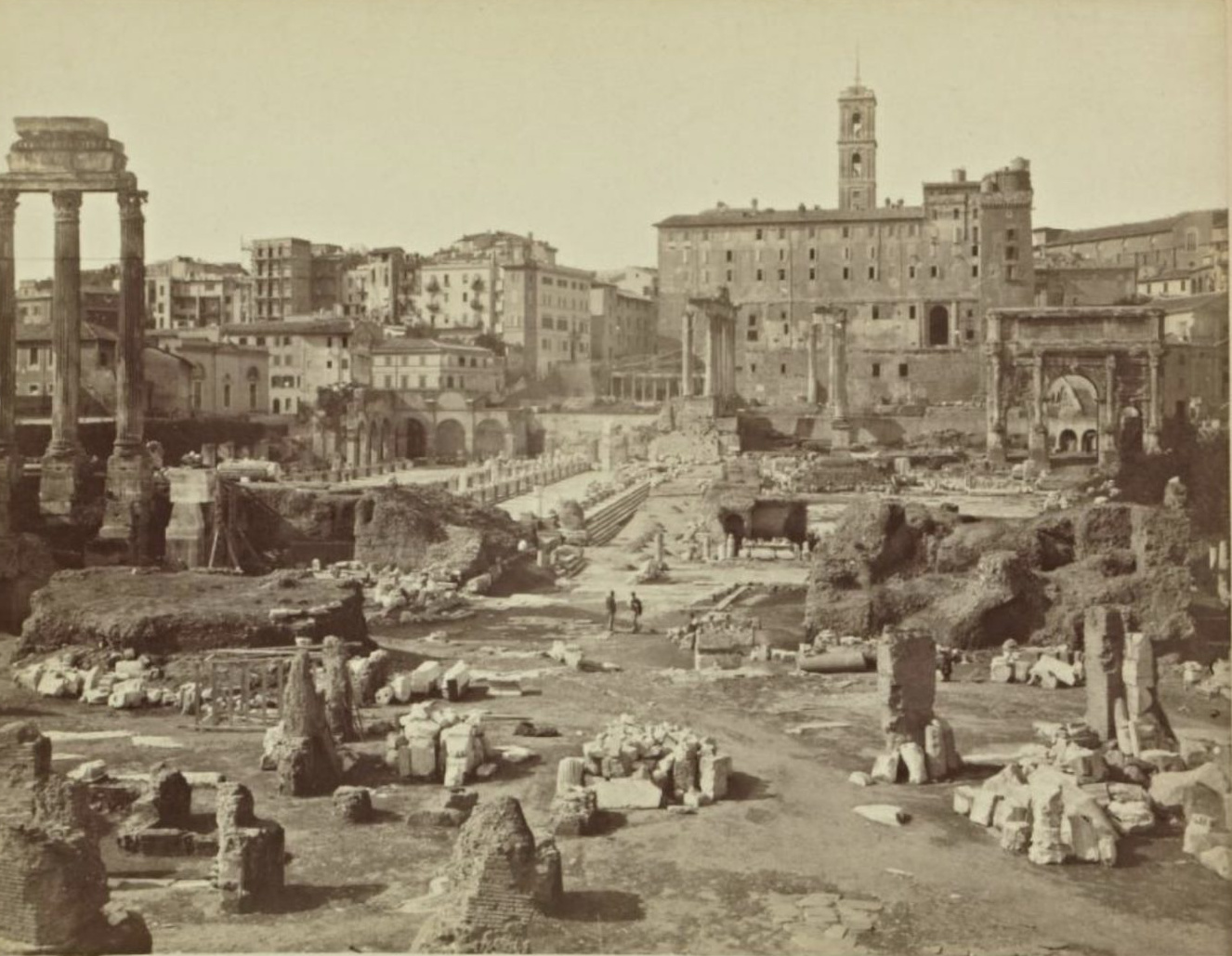Invented and refined in the 1830s and 1840s, photography was initially hailed as an apolitical medium, a pure marriage of science and art. The French critic Francis Wey celebrated its ability to represent what he called “exquisite reality” — to depict the world exactly as it was. Photography not only reproduces the world the that a photographer sees; it also reveals how they see it. The pictures featured in this exhibition document the ideologies, biases, and aspirations of artists, patrons, and audiences in the nineteenth century.

Gaetano Pedo Studio (Italian, 1880–1890), The Roman Forum, Rome (Roma, Foro Romano), 19th century. Albumen print. Museum Purchase Fund, 1973.63.2
A Cantor Arts Center Curatorial Fellow Online Exhibition
until March 31, 2022
An introduction to Exquisite Reality by Danny Smith
Invented and refined in the 1830s and 1840s, photography was initially hailed as an apolitical medium, a pure marriage of science and art. The French critic Francis Wey celebrated its ability to represent what he called “exquisite reality” — to depict the world exactly as it was.
But while many championed photography as modern and objective, the medium quickly became a powerful political tool. In nineteenth-century France, photographers were dispatched from Paris to document the nation’s historical patrimony. In Italy, under King Vittorio Emanuele II, they were commissioned to depict the monuments of once-warring kingdoms as the shared heritage of a newly unified nation. British photographers took to the countryside, fueled by the popular Gothic Revival movement, to document the monuments of the Middle Ages. The images they made recast these buildings as the source of modern British power and an antidote to the ills of the Industrial Revolution. Ottoman sultans sent photographers to document the empire’s vast holdings, stretching across the Eastern Mediterranean, with the specific directive to depict the diverse subjects as a unified nation.
While photographers documenting their own nations stoked nationalistic pride and patriotism, those working abroad generally served explicitly colonial purposes. As European governments seized territory across Africa, Asia, and the Middle East, their photographers documented sites they perceived as exotic and mysterious for audiences back home. The images popularized racist and orientalist notions of distant lands rich in history, peoples, and resources ripe for exploitation.
Photography not only reproduces the world that a photographer sees; it also reveals how they see it. The pictures featured in this exhibition document the ideologies, biases, and aspirations of artists, patrons, and audiences in the nineteenth century. Exquisite Reality brings together landscape photographs made over nearly fifty years, from the first French missions to photo-document architecture in 1851 to surveys of Italian infrastructure made in the beginning of the twentieth century. Collectively they demonstrate both how photography was shaped by prevalent ideologies, and how it became a political force in its own right, illustrating as fact what was very often a selective political fiction.
The works below are organized around four broad categories, each a quality evoked by the photographs: history, modernity, mystery, and travel. Such categories are hardly exclusive, however; you'll see a single image might use a historical building to frame a modern scene, or a distant landscape to depict an exotic scene. As you explore the exhibition, consider not only what these images depict but what senses they convey and how they shape what we as viewers consider what appears modern, or ancient, or exotic, or distant.
This exhibition is organized by Danny Smith, Cantor Curatorial Fellow, and Cantor Arts Center staff.
TAGREE, I love the cultural work you do, I donate to show you my sincere appreciation:
or become a reader with a TAGREEplus+Pass for unlimted access









